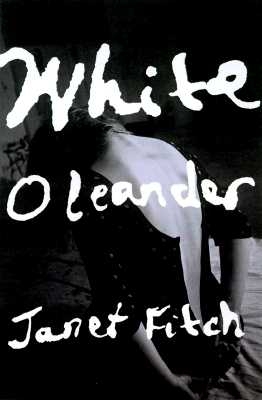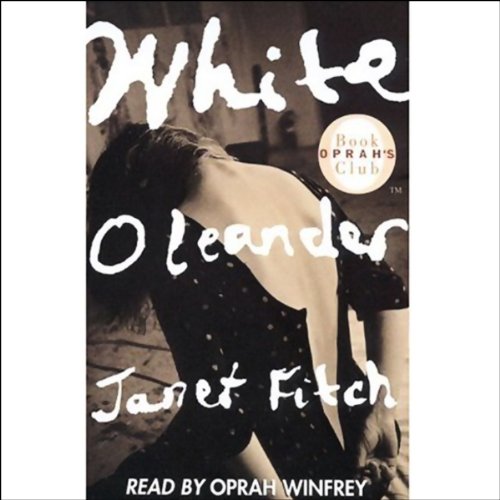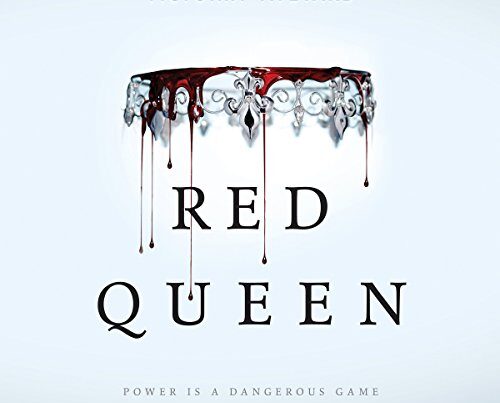The audiobook “White Oleander” by Janet Fitch is a captivating story narrated with emotion and depth. It brings the novel’s characters to life.
“White Oleander” tells the story of Astrid Magnussen, a young girl navigating the foster care system after her mother is imprisoned for murder. The audiobook, narrated by Oprah Winfrey, provides an immersive experience that captures the novel’s intense emotions and complex characters.
Listeners are drawn into Astrid’s tumultuous journey of self-discovery and resilience. The narration adds a layer of depth, making the characters more relatable and the story more compelling. Ideal for fans of emotional and character-driven narratives, this audiobook offers a profound exploration of the human spirit. It’s a must-listen for those seeking a moving and thought-provoking experience.
Introduction To ‘white Oleander’
‘White Oleander’ is a gripping tale by Janet Fitch. The audiobook version brings this story to life. It immerses listeners in a world of passion and survival. The book explores themes of motherhood, resilience, and identity. The protagonist, Astrid Magnussen, faces numerous challenges. Her journey is both heartbreaking and inspiring.
Janet Fitch’s Literary Journey
Janet Fitch is an acclaimed author. Her path to success is inspiring. She began her career with short stories. Over time, she transitioned to novels. Her writing is known for its poetic style. ‘White Oleander’ is her most famous work. It earned her critical acclaim and a dedicated fan base.
Fitch’s prose is both lyrical and powerful. She weaves intricate tales of human emotion. Her characters are deeply flawed but relatable. Her storytelling captivates readers and listeners alike. The success of ‘White Oleander’ cemented her place in contemporary literature.
Impact Of ‘white Oleander’ On Contemporary Fiction
‘White Oleander’ has had a significant impact on contemporary fiction. The novel’s themes resonate with many readers. It explores complex relationships and personal growth. The audiobook version adds an extra layer of depth. It allows listeners to experience the story in a new way.
The novel’s influence can be seen in many modern works. Authors often draw inspiration from Fitch’s writing style. ‘White Oleander’ has also been adapted into a successful film. Its reach extends beyond the literary world. The story’s emotional depth and vivid imagery set a high standard for contemporary fiction.
For those seeking a powerful and moving story, ‘White Oleander’ is a must-listen. The audiobook provides an immersive experience. It brings Janet Fitch’s words to life, engaging the senses and emotions.

Plot Synopsis
The audiobook of Janet Fitch’s White Oleander captivates listeners with its intense narrative. A story about a young girl’s struggle and growth, it explores themes of love, betrayal, and survival. The audiobook brings Astrid Magnussen’s journey vividly to life, making it an unforgettable experience.
A Tale Of Love And Betrayal
Astrid Magnussen, the protagonist, lives with her mother, Ingrid. Ingrid is a beautiful but distant poet. She teaches Astrid to be strong and independent. Their bond is strong but complicated. Ingrid’s actions lead to her imprisonment, leaving Astrid alone.
Astrid then enters the foster care system. Each home she lives in reveals more about love and betrayal. She learns from the women she meets. They shape her understanding of the world. Each experience teaches her something new.
The Odyssey Of Astrid Magnussen
Astrid’s journey is challenging and transformative. She moves from one foster home to another. Every move brings new trials and lessons. She encounters kindness and cruelty. Her resilience grows with each challenge.
She faces numerous struggles. From abusive foster parents to finding her own identity. Each step of her journey is a test of her strength. Astrid’s story is a true odyssey. It’s about finding oneself amidst chaos and pain.
| Character | Role | Impact on Astrid |
|---|---|---|
| Ingrid Magnussen | Mother | Teaches independence and strength |
| Starr | First foster mother | Introduces Astrid to faith and instability |
| Claire Richards | Foster mother | Offers genuine care and love |
White Oleander’s audiobook version brings these characters and their stories to life. Each voice adds depth to the narrative. It’s an emotional journey that keeps listeners engaged from start to finish.
Characters And Development
The audiobook of Janet Fitch’s White Oleander brings its characters to life. The story’s depth lies in the complex character development. Each character adds a unique layer to the narrative.
Astrid Magnussen: Protagonist’s Evolution
Astrid Magnussen is the protagonist of White Oleander. Her journey is a tale of resilience and growth. Astrid starts as a young girl, deeply influenced by her mother.
As the story progresses, Astrid faces numerous challenges. She moves through various foster homes, each experience shaping her personality. Her character development is rich, showcasing her transformation from innocence to strength.
Key points of Astrid’s evolution include:
- Adaptation to new environments
- Struggle with identity and belonging
- Learning to trust herself
- Forming and breaking relationships
Each foster home introduces Astrid to new lessons. These experiences mold her into a resilient young woman.
Ingrid Magnussen: Analyzing The Antagonist
Ingrid Magnussen is Astrid’s mother and the story’s antagonist. Ingrid’s character is complex, filled with artistic brilliance and emotional coldness.
Ingrid’s actions have a profound impact on Astrid. She is a famous poet, known for her beauty and intellect. However, her manipulative nature and emotional detachment create a toxic environment for Astrid.
Key aspects of Ingrid’s character include:
- Her influence on Astrid’s early life
- Her incarceration and its effects on Astrid
- Her continued control over Astrid from prison
- Her eventual realization of her mistakes
Ingrid’s character serves as a catalyst for Astrid’s growth. Despite being an antagonist, her complexities add depth to the narrative.
Themes And Motifs
Janet Fitch’s novel, White Oleander, narrated in the audiobook version, delves deep into complex themes and motifs. The story beautifully unfolds through these elements, giving listeners an immersive experience. Below, we explore two significant themes: Mother-Daughter Dynamics and the Search for Identity.
Mother-daughter Dynamics
The relationship between Astrid and her mother, Ingrid, is central to the story. Their bond is intense, filled with both love and pain. Ingrid is a brilliant poet, but she has a cold, controlling nature. This affects Astrid deeply, shaping her growth and experiences.
Throughout the audiobook, listeners witness the evolution of their relationship. Astrid’s journey involves navigating the challenges posed by her mother’s actions and decisions. This dynamic is a crucial part of Astrid’s development and resilience.
Search For Identity
Astrid’s quest for self-discovery is another key theme in White Oleander. Growing up in various foster homes, she encounters diverse influences and lifestyles. Each home presents new challenges, forcing Astrid to adapt and redefine herself.
Her search for identity is a continuous process, impacted by her mother’s legacy and the people she meets. The audiobook vividly captures Astrid’s inner struggles and triumphs. This theme resonates with many listeners, making it a powerful aspect of the story.
| Theme | Description |
|---|---|
| Mother-Daughter Dynamics | Explores the intense bond between Astrid and her mother. |
| Search for Identity | Astrid’s journey to find herself amidst changing environments. |
White Oleander is a compelling audiobook that masterfully weaves these themes into its narrative. Each theme adds depth and richness to Astrid’s story, making it a memorable listen.
Narrative Style And Structure
The narrative style and structure of Janet Fitch’s White Oleander audiobook are compelling. The story captivates listeners with its unique approach. Fitch’s storytelling choices enhance the emotional depth and complexity of the tale.
First-person Perspective
The audiobook uses a first-person perspective. This allows readers to experience the story through Astrid’s eyes. Her thoughts and emotions come alive in the narration. This perspective creates a deep connection with the character. It makes her journey more personal and engaging.
Astrid’s voice is both authentic and raw. Her experiences unfold vividly in this intimate storytelling style. The first-person perspective adds layers of meaning to her struggles and growth.
Use Of Symbolism
Fitch employs rich symbolism throughout the audiobook. Each symbol adds depth to the narrative. For example, the white oleander flower represents beauty and danger. This duality mirrors Astrid’s life and relationships.
Symbols like the stars and the ocean also play crucial roles. They reflect Astrid’s longing for freedom and her turbulent emotions. Fitch’s use of symbolism enriches the listener’s experience, making the story more thought-provoking.

Critical Reception
Janet Fitch’s White Oleander audiobook has garnered significant attention. The book’s powerful narrative and audiobook format captivated audiences. Let’s delve into its critical reception.
Literary Accolades And Reviews
White Oleander received numerous literary accolades. The novel became an Oprah’s Book Club selection in 1999. This honor catapulted its popularity.
Critics praised Fitch’s writing style. Her use of language is poetic and evocative. The audiobook narration enhances this experience. It brings Astrid’s journey to life.
| Accolade | Year |
|---|---|
| Oprah’s Book Club Selection | 1999 |
| Los Angeles Times Best Book | 1999 |
Public And Scholarly Interpretations
The public embraced White Oleander wholeheartedly. Readers connected with Astrid’s struggles and triumphs. The audiobook format made it accessible to a wider audience.
Scholars have analyzed the themes in the novel. They explored topics like mother-daughter relationships and identity. The audiobook adds a new layer to these interpretations.
Here are some common themes discussed:
- Mother-Daughter Dynamics: Ingrid and Astrid’s complex relationship.
- Resilience: Astrid’s journey through foster care.
- Identity: Astrid’s self-discovery and growth.
The audiobook brings these themes to life. The narration adds depth to the characters’ voices. This enhances the overall experience for listeners.
Audiobook Adaptation
The audiobook adaptation of Janet Fitch’s White Oleander brings the story to life in a new way. This format allows listeners to experience the novel with an added layer of depth. The narrative, already rich and evocative, gains a fresh dimension through voice acting and sound design.
Voice Acting And Interpretation
The voice acting in the White Oleander audiobook is exceptional. The narrator’s interpretation of each character adds nuance and emotion. Every spoken word feels genuine and heartfelt. The voices reflect the characters’ personalities and struggles. The tone and pacing enhance the story’s impact.
Through skilled voice acting, the audiobook captures the essence of Janet Fitch’s writing. The narrator’s performance makes the listener feel part of the story. The delivery of dialogue and internal monologues is seamless. This makes the audiobook a compelling listening experience.
Comparing The Audiobook To The Print Version
Both the audiobook and the print version of White Oleander have their unique strengths. The print version allows readers to savor the prose at their own pace. They can reread passages and reflect on the writing style.
In contrast, the audiobook offers a different kind of immersion. The voice acting and sound design create a vivid, auditory experience. Listening to the story can evoke emotions in a way that reading might not.
Here’s a comparison table highlighting key differences:
| Aspect | Print Version | Audiobook |
|---|---|---|
| Format | Text on pages | Spoken word |
| Pacing | Reader-controlled | Narrator-controlled |
| Emotional Impact | Reader’s interpretation | Enhanced by voice acting |
| Accessibility | Requires reading | Can listen while multitasking |
Both versions offer unique ways to enjoy the story. Choose the format that suits your preferences. Either way, Janet Fitch’s White Oleander is a powerful tale worth experiencing.

Cultural Influence
Janet Fitch’s White Oleander has left a significant mark on popular culture. The novel’s profound themes resonate across various media. Its influence extends beyond literature, shaping the cultural landscape.
Influence On Popular Culture
White Oleander explores themes like motherhood, identity, and resilience. These themes touch many hearts. The book’s portrayal of complex relationships has inspired countless discussions. Readers connect deeply with Astrid’s journey. This connection has led to the book’s enduring popularity.
Many readers find themselves reflecting on their lives. The novel’s impact is evident in book clubs and online forums. Fans share their thoughts and experiences, creating a vibrant community. This engagement keeps the story alive in popular culture.
Adaptations And References In Other Media
The novel was adapted into a film in 2002. The movie brought the story to a wider audience. Starring Michelle Pfeiffer and Alison Lohman, it received critical acclaim. The film adaptation further cemented the novel’s cultural significance.
References to White Oleander appear in various TV shows and movies. The book is often seen on characters’ bookshelves. These references showcase the novel’s lasting impact. It remains a symbol of profound storytelling.
Artists and musicians also draw inspiration from the novel. Its themes inspire songs, paintings, and other creative works. The story’s emotional depth resonates with creators across genres.
| Media | Adaptation/Reference |
|---|---|
| Film | 2002 movie adaptation starring Michelle Pfeiffer |
| TV Shows | Appearances in character bookshelves |
| Music | Songs inspired by the novel’s themes |
| Art | Paintings and artworks influenced by the story |
The influence of White Oleander continues to grow. Its legacy in popular culture is undeniable. This novel has become a beacon of thought-provoking literature.
Reading Vs. Listening Experience
The reading vs. listening experience of Janet Fitch’s “White Oleander” provides unique ways to engage with the story. Whether you read the book or listen to the audiobook, each method offers distinct advantages. Let’s explore these differences in depth.
Engaging The Senses
Reading “White Oleander” allows you to visualize the scenes in your mind. The words on the page help create vivid imagery. This can make the story feel more personal. You control the pace and can re-read sections.
The audiobook, narrated by a skilled voice actor, adds another layer. The tone, pitch, and emotion in the voice bring characters to life. Background sounds and music can enhance the atmosphere. It feels like a performance, making the story more immersive.
Accessibility And Convenience
Reading a book requires a quiet space and good lighting. You need to hold the book and turn pages. This can be challenging in some situations.
Listening to the audiobook offers more accessibility. You can listen while commuting, exercising, or doing chores. It’s hands-free and portable. The audiobook app also allows bookmarking and speed adjustment.
| Aspect | Reading | Listening |
|---|---|---|
| Engagement | Visual Imagery | Audio Performance |
| Convenience | Requires a quiet space | Hands-free, portable |
| Control | Re-read sections | Adjust speed, bookmark |
Conclusion
The “White Oleander” audiobook by Janet Fitch offers an enthralling listening experience. Rich storytelling and compelling characters captivate the audience. Perfect for fans of emotional and profound narratives. This audiobook is a must-listen for anyone seeking an unforgettable literary journey.
Dive into this mesmerizing tale today.



